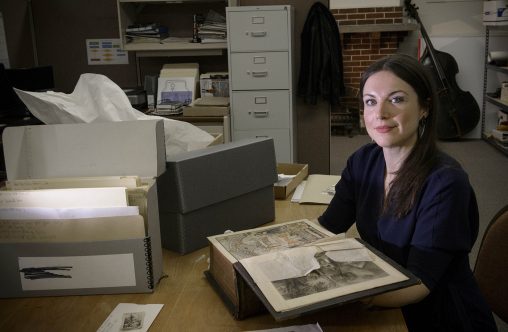Excerpt

Hadley Drodge wants to use her master’s degree program in public history to pursue a career in archiving and museum studies.
Their story is powerful. Nearly 400 freed slaves—including an infant less than 1-year-old and a woman over 100—make a 500-mile pilgrimage on foot and by horse from a Virginia plantation to promised land in Ohio in 1846, only to be driven away and scattered by threats of violence.
Hadley Drodge had heard the account, but it was only words. That is until one fateful day in the summer of 2016 when she arrived at a house in Rossville, Ohio, to pick up some photos and other artifacts for the National Afro-American Museum and Cultural Center from Helen Gilmore, who founded the Springcreek Rossville Historic House Museum and donated the collection.
It was then that she realized she was about to see what few others had—the visual aftermath of the storm-tossed history of the Randolph slaves, the photos that told their story. Chills ran down her spine.
“The story I had heard was real, and it was right in front of me,” Drodge says. “When I went inside and saw all of the photographs, I just was overwhelmed.”
Today, the Wright State University graduate student is assembling an exhibit about the Randolph slaves, which opened at the Afro-American Museum in Wilberforce, Ohio, on May 20 and will run until Nov. 25. She wants to concentrate more on the slaves than white slave-owner John Randolph, who has always received most of the attention.
Read the entire story at daytoncitypaper.com

 Wright State students, first responders team up for Halloween event
Wright State students, first responders team up for Halloween event  Explore Wright State Day welcomes hundreds of future Raiders
Explore Wright State Day welcomes hundreds of future Raiders  Four Wright State nursing programs receive accreditations, including new doctorate degree
Four Wright State nursing programs receive accreditations, including new doctorate degree  Wall Street Journal ranks Wright State top public university in Ohio for student experience
Wall Street Journal ranks Wright State top public university in Ohio for student experience  Wright State’s Raj Soin College of Business to launch Sandler Center for Innovation and Entrepreneurship
Wright State’s Raj Soin College of Business to launch Sandler Center for Innovation and Entrepreneurship 